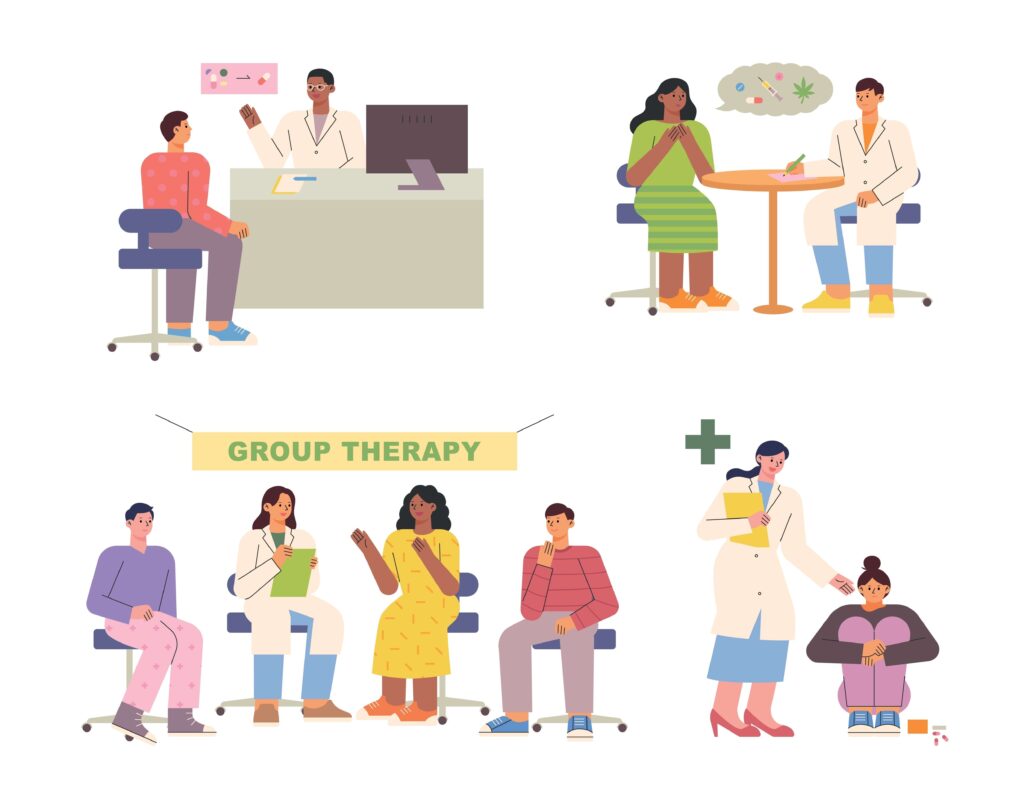Buprenorphine vs Suboxone: Top Similarities and Differences

The Buprenorphine vs Suboxone debate is one that clinicians and clients may explore, but what medication is best for you–and is medicine for your substance use disorder your ideal treatment? At WhiteSands, we offer treatment that’s tailored to the needs of each client. Medication-assisted treatment (MAT) is most frequently prescribed to individuals who are recovering from an opioid use disorder (i.e. heroin addiction) or alcohol use disorder. Both Buprenorphine and Suboxone are MAT drugs used to treat someone who is addicted to an opioid like heroin or a prescription narcotic. Although not prescribed in all cases, these medications may be useful for enhancing the recovery process.
At WhiteSands, we offer medication assisted treatment as well as a full range of addiction treatment programs that include drug and alcohol detox, inpatient rehab treatment, outpatient treatment, and aftercare. Our licensed and experienced clinicians can also treat dual diagnosis. Our rehab addiction specialists meet clients wherever they are in their recovery process. Whether you need a robust level of support as offered in inpatient rehab or if you need outpatient counseling, WhiteSands can help.
Our rehab center offers many advanced therapeutic options. Our treatments include medically traditional therapies like cognitive behavioral therapy, alternative therapies like art therapy, and holistic therapies like yoga and nutrition. Together, these therapeutic approaches target all aspects of substance addiction and recovery. We can design a treatment plan that is ideal for your specific treatment needs.
It’s never wise to put off addiction treatment or think that you can control your condition on your own without help. The goal of treatment is to help people manage their addiction effectively on their own, but it takes new skills and strategies to make that happen and prevent relapse. Let our experienced addiction specialists help you cope with your condition successfully so you can rebuild your life without drugs or alcohol.
Understanding Buprenorphine and Its Role in Addiction Treatment
Buprenorphine is a partial opioid agonist that may be prescribed to individuals who have an opioid use disorder. The drug is designed to target the opioid receptors in the brain to, effectively, satisfy their need for an opioid but without getting the individual high. This drug prevents opioid withdrawal symptoms, which allows the individual to focus more clearly on their additional therapies. Many clinicians offer Buprenorphine at the onset of a person’s recovery journey. Unlike Suboxone, however, this medication may be more easily abused. Expect clinicians to monitor its use carefully.
Introducing Suboxone: Composition and Clinical Use
Suboxone contains two active ingredients: Buprenorphine (discussed above) and Naloxone. The Buprenorphine contained in the medication does exactly what is described above; it targets the opioid receptors in the brain so that they feel satisfied and don’t trigger withdrawal symptoms. The Naloxone in the medication is there to help deter abuse. If the individual cuts up the drug to inject it, for instance, the Naloxone will make the individual feel sick. Similarly, if the individual takes an opioid drug, the Naloxone will trigger unpleasant side effects like vomiting. Suboxone may be prescribed at any point during the individual’s recovery process. Many clinicians prefer it because it has built-in safety that reduces the risk for drug abuse.
Similarities Between Buprenorphine and Suboxone

Buprenorphine and Suboxone are quite similar since Suboxone contains Buprenorphine as one of its two active ingredients. What Buprenorphine lacks and what Suboxone has is the medication Naloxone, which is included to help reduce the potential for drug abuse. Naloxone will make an individual feel sick if they abuse an opioid while taking the medication. It does not prevent it 100%, but it does help. Since opioid relapse rates are high, the medication may be prescribed to reduce a person’s relapse risk. Today, both of these medications are readily prescribed by rehabs that offer medication assisted treatment.
Key Differences: Buprenorphine vs Suboxone
The key difference between Suboxone and Buprenorphine is that Suboxone is less likely to be abused because it includes Naloxone. Both medications are partial opioid agonists and do the same thing: target the brain’s opioid receptors to shut down withdrawal symptoms. However, Suboxone contains Naloxone and Buprenorphine does not. This is the chief difference between these two drugs. Which is right for you? That depends on what your clinicians recommend. Some people may begin recovery with Buprenorphine but may be switched to Suboxone as their recovery progresses. Your clinician will recommend one or the other based on your needs.
Side Effects and Safety Considerations
When taking any medication assisted treatment, it’s important to note that there may be side effects, especially at first. Users may experience dry mouth or drowsiness. Your clinician will review all potential side effects with you. If your side effects increase in severity, it’s important to alert your clinician right away. If you have a bad reaction to a drug (for instance, some people may be allergic to Naloxone), you should stop taking the medication and alert your practitioner immediately. You may need emergency medical assistance in such cases or if your side effects become severe. Always use the medications as directed by your physician. Do not increase the dose or take the medication in any other way than how it is prescribed to be taken.
The Role of Naloxone in Suboxone Treatment
Naloxone is one of the two active ingredients in Suboxone. The drug helps reduce the risk of abuse. Since Suboxone is a partial opioid agonist, it does have a risk for abuse. Users could crush and inject it, for instance. Users could also relapse and use an opioid. If users do attempt to misuse Suboxone or use another opioid, the presence of the Naloxone causes them to get sick. They will experience effects such as nausea and vomiting, which is a deterrent for opioid misuse.
Choosing Between Buprenorphine and Suboxone for Addiction Recovery
When you enroll at WhiteSands for addiction treatment, you will be evaluated by our licensed clinicians. They will discuss your treatment options and develop the ideal treatment plan for you. They may prescribe one of the other medication-assisted treatment if you wish to proceed with MAT. Because each person is different, they may prescribe one or the other medication to you based on your unique needs. Expect your clinician to discuss the medication they prescribe you in detail so that you’re aware of how to use it properly and how not to use it. If MAT is right for you, either of these drugs may be useful as part of your overall treatment plan. Keep in mind that neither drug is a cure; these medications are only prescribed to support the recovery process.
How WhiteSands Treatment Approaches Buprenorphine and Suboxone Therapy
Call WhiteSands to learn more about our medication assisted treatment options and treatment plans. Let us help you get your life and health back on track. As a leading rehab center, we offer the best and most effective forms of addiction treatment. Contact us to discuss our enrollment process. Again, we offer medical detox, inpatient rehab, outpatient rehab, and aftercare. We can support you wherever you are in your recovery journey. With treatment, you can get the help you need to manage your addiction for good.
If you or a loved one needs help with abuse and/or treatment, please call the WhiteSands Treatment at (877) 855-3470. Our addiction specialists can assess your recovery needs and help you get the addiction treatment that provides the best chance for your long-term recovery.

